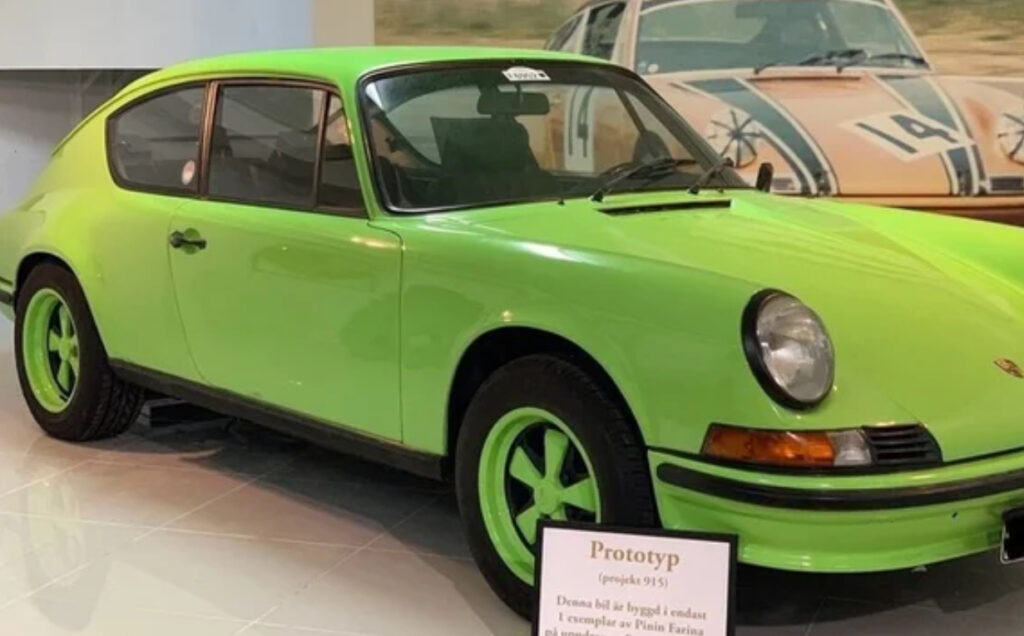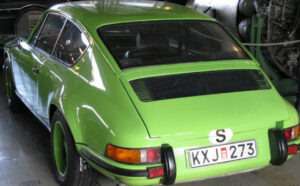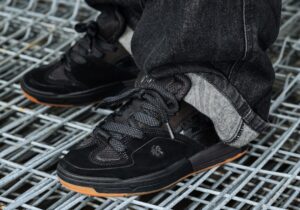There are cars. And then there are objects of movement so singular, so alchemically rare, that they cease to be mere machines. They become artifacts—delicate balances of engineering, sculpture, and dream. The only Pininfarina-designed long-wheelbase 1969 Porsche 911 in existence is one such object. It is not a restomod. It is not a speculative concept. It is a living testament to a fleeting moment in automotive history where two legacies—German precision and Italian finesse—converged in a single machine. And now, for the first time, it is for sale.
To call it a collector’s item feels reductive. This car is a whisper from a parallel timeline—one where Stuttgart handed the reins of its most sacred silhouette to the house of Pininfarina, known more for its flowing Ferraris and Maseratis than for Teutonic restraint. The result? A uniquely sculpted long-wheelbase 911 that carries the gravity of a sculpture and the soul of a speed machine.
In an era of digital reproductions and mass-produced nostalgia, this Porsche-Pininfarina collaboration stands as an irreplicable gesture: bespoke, elegant, purposeful, and utterly unrepeatable.
A Convergence of Philosophy: Porsche Meets Pininfarina
To understand the significance of this 1969 Porsche 911, one must appreciate the creative tension it embodies. Porsche and Pininfarina were never natural bedfellows. The former was born of Bauhaus discipline—function first, elegance earned through utility. The latter was the high priest of sensuality in motion. Pininfarina was about drama, poetry in aluminum, the shaping of desire into form.
That a long-wheelbase 911—a model known for its purist appeal and handling dynamics—was given to Pininfarina in the first place is almost an anomaly in itself. The redesign wasn’t meant to be a commercial prototype. It was a quiet experiment, a diplomatic nod between two houses of automotive royalty. The end result, however, is anything but quiet.
The car retains the essential DNA of the 911: its boxer engine, rear-engine placement, and iconic profile. But under Pininfarina’s hand, those traits are distilled, stretched, and whispered through a different lens. It is the Porsche you know—but from a dream you’ve never had.
Design As Dialogue
What makes this particular 911 extraordinary isn’t just the collaboration—it’s the restraint. Pininfarina didn’t overwrite the Porsche ethos; it conversed with it.
The design language remains clean and efficient, but subtle alterations ripple across the surface. The front fenders are just slightly more pronounced, swelling like quiet breaths rather than dramatic flares. The nose is smoother, almost aquatic. The roofline has been massaged for continuity, while the long-wheelbase subtly elongates the car’s profile, lending it a presence that is more grand tourer than racer.
It’s as though someone took the original 911, closed their eyes, and re-sketched it with softer pencils on Italian parchment.
The detailing, too, is a study in curated minimalism. There is no needless ornamentation. No badging screams for attention. Even the bumpers are integrated with a precision that suggests sculpture rather than safety regulation. Every line feels inevitable.
This isn’t just a car. It is a moment of intercontinental understanding. And as such, it speaks not in commands, but in sonnets.
The Rarity Beyond Numbers
There is a temptation to define this car by its uniqueness—after all, it is the only one. But rarity in the automotive world is not simply about volume; it’s about context. A singular Ferrari prototype might feel like a natural extension of the brand. A one-off Lamborghini might evoke shock, but not surprise.
But a Pininfarina-designed Porsche? That is a narrative rupture. It questions identity while reinforcing it. It bends two traditions into one improbable result.
That it was built on a 1969 long-wheelbase platform makes the tale even more compelling. That year marked a transition in Porsche’s chassis design—part of its evolution from track purist to global brand. The long-wheelbase configuration improved stability, smoothed out oversteer tendencies, and offered a platform for experimentation. For Pininfarina to choose this foundation for its only Porsche endeavor was no accident. It was a salute to potential, to progression.
The Mechanics of Legacy
Underneath the form still lies the familiar heart of the 911: a flat-six boxer engine, rear-mounted, air-cooled, and full of that inimitable whirr and snarl. But even here, rumors swirl of tuning tweaks, subtle enhancements, Italian-influenced suspension settings. This is not just a styling exercise—it is a holistic reinterpretation.
Unlike modern collaborations, where bespoke tuning and branding are monetized at scale, this car remains pure. It was never built to be resold. It was never serialized. It was art made quietly—and only now revealed loudly, decades later, as it surfaces in the collector’s market.
The car is expected to demand a multi-million dollar valuation, and justifiably so. But what the buyer will be acquiring isn’t merely horsepower or leather. It is ownership of an impossible conversation between two masters of their craft.
The Auction Block as Stage
As it prepares to cross the auction block, the atmosphere surrounding this car is less of commerce and more of ceremony. Collectors whisper about it in reverent tones. Designers cite it as a ghost that proves alternate histories exist. Even skeptics admit its power—not as a driver’s car per se, but as a philosophical object.
The buyer who wins it will not be gaining a car—they will be inheriting a dilemma. Do you drive it, or enshrine it? Do you take it out on Alpine roads at dawn, or place it under glass with controlled humidity?
No answer is wrong. But all answers lead back to the same question: what does it mean to own a singularity?
The Future of One-Offs in a World of Replication
We live in a time when “limited” can mean anything from 500 to 5,000 units. Where collaborations are often marketing exercises, and where retro reissues try to bottle lightning without ever courting risk. Against that backdrop, this Pininfarina Porsche feels like a rebuke. A quiet, elegant, decisive rebuke.
There will never be another one. Because even if someone today asked Pininfarina to reimagine a 911, the conditions would be different. The world has changed. Porsche has changed. And Pininfarina, too, has evolved into something larger, more corporate, more diversified.
This car exists because it didn’t try to predict trends. It followed instinct.
In a sense, its most radical act was simply being created at all.
More Than Steel and Style
To see this 1969 Porsche 911 by Pininfarina is to confront the fact that design is not always about solving problems. Sometimes, it is about asking better questions.
What if Porsche had leaned more toward romance? What if Pininfarina had embraced restraint over flourish? What happens when you blend precision and passion—not as opposing forces, but as collaborators?
This one-off answers those questions in the only way great design ever does: not with explanation, but with presence.
And now, for the first time, that presence can be yours. Not as a status symbol. Not as a trophy. But as a piece of living history—one shaped by wind tunnels and ink sketches, by chassis welds and whispered dreams.
The only Pininfarina-designed long-wheelbase 1969 Porsche 911 in the world is for sale.
But its true value? That cannot be measured.
No comments yet.









